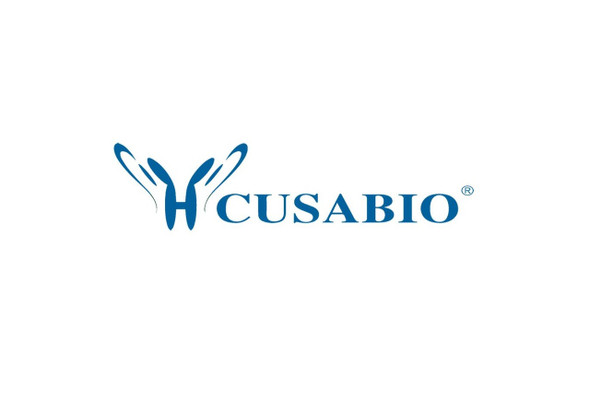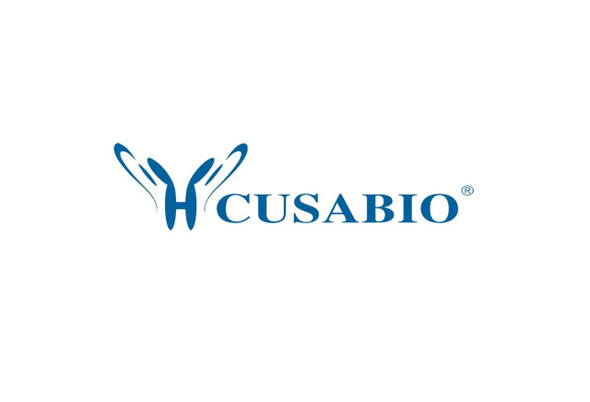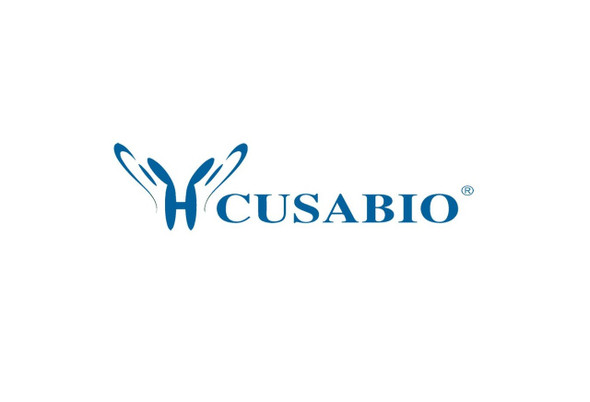Cusabio Human Recombinants
Recombinant Human Ras-related protein Rab-10 (RAB10), partial | CSB-EP019152HU
- SKU:
- CSB-EP019152HU
- Availability:
- 3 - 7 Working Days
Description
Recombinant Human Ras-related protein Rab-10 (RAB10), partial | CSB-EP019152HU | Cusabio
Alternative Name(s): GTP binding protein RAB10; Rab10; RAB10 member RAS oncogene family; RAB10_HUMAN; Ras related GTP binding protein; Ras related GTP binding protein RAB10; Ras-related protein Rab-10
Gene Names: RAB10
Research Areas: Signal Transduction
Organism: Homo sapiens (Human)
AA Sequence: MAKKTYDLLFKLLLIGDSGVGKTCVLFRFSDDAFNTTFISTIGIDFKIKTVELQGKKIKLQIWDTAGQERFHTITTSYYRGAMGIMLVYDITNGKSFENISKWLRNIDEHANEDVERMLLGNKCDMDDKRVVPKGKGEQIAREHGIRFFETSAKANINIEKAFLTLAEDILRKTPVKEPNSENVDISSGGGVTGWK
Source: E.coli
Tag Info: N-terminal 6xHis-tagged
Expression Region: 1-196aa
Sequence Info: Partial
MW: 26.1 kDa
Purity: Greater than 90% as determined by SDS-PAGE.
Relevance: The small GTPases Rab are key regulators of intracellular membrane trafficking, from the formation of transport vesicles to their fusion with membranes. Rabs cycle between an inactive GDP-bound form and an active GTP-bound form that is able to recruit to membranes different set of downstream effectors directly responsible for vesicle formation, movement, tethering and fusion. That Rab is mainly involved in the biosynthetic transport of proteins from the Golgi to the plasma membrane. Regulates, for instance, SLC2A4/GLUT4 glucose transporter-enriched vesicles delivery to the plasma membrane. In parallel, it regulates the transport of TLR4, a toll-like receptor to the plasma membrane and therefore may be important for innate immune response. Plays also a specific role in asymmetric protein transport to the plasma membrane within the polarized neuron and epithelial cells. In neurons, it is involved in axonogenesis through regulation of vesicular membrane trafficking toward the axonal plasma membrane while in epithelial cells, it regulates transport from the Golgi to the basolateral membrane. Moreover, may play a role in the basolateral recycling pathway and in phagosome maturation.may play a role in endoplasmic reticulum dynamics and morphology controlling tubulation along microtubules and tubules fusion.
Reference: "Rab10 regulates membrane transport through early endosomes of polarized Madin-Darby canine kidney cells." Babbey C.M., Ahktar N., Wang E., Chen C.C., Grant B.D., Dunn K.W. Mol. Biol. Cell 17:3156-3175(2006)
Storage: The shelf life is related to many factors, storage state, buffer ingredients, storage temperature and the stability of the protein itself. Generally, the shelf life of liquid form is 6 months at -20?/-80?. The shelf life of lyophilized form is 12 months at -20?/-80?.
Notes: Repeated freezing and thawing is not recommended. Store working aliquots at 4? for up to one week.
Function: The small GTPases Rab are key regulators of intracellular membrane trafficking, from the formation of transport vesicles to their fusion with membranes. Rabs cycle between an inactive GDP-bound form and an active GTP-bound form that is able to recruit to membranes different set of downstream effectors directly responsible for vesicle formation, movement, tethering and fusion (By similarity). That Rab is mainly involved in the biosynthetic transport of proteins from the Golgi to the plasma membrane. Regulates, for instance, SLC2A4/GLUT4 glucose transporter-enriched vesicles delivery to the plasma membrane. In parallel, it regulates the transport of TLR4, a toll-like receptor to the plasma membrane and therefore may be important for innate immune response. Plays also a specific role in asymmetric protein transport to the plasma membrane within the polarized neuron and epithelial cells. In neurons, it is involved in axonogenesis through regulation of vesicular membrane trafficking toward the axonal plasma membrane while in epithelial cells, it regulates transport from the Golgi to the basolateral membrane. Moreover, may play a role in the basolateral recycling pathway and in phagosome maturation. According to PubMed
Involvement in disease:
Subcellular Location: Cytoplasmic vesicle membrane, Lipid-anchor, Cytoplasmic side, Golgi apparatus membrane, Golgi apparatus, trans-Golgi network membrane, Endosome membrane, Recycling endosome membrane, Cytoplasmic vesicle, phagosome membrane, Cell projection, cilium, Endoplasmic reticulum membrane
Protein Families: Small GTPase superfamily, Rab family
Tissue Specificity:
Paythway: AMPKSignaling
Form: Liquid or Lyophilized powder
Buffer: If the delivery form is liquid, the default storage buffer is Tris/PBS-based buffer, 5%-50% glycerol. If the delivery form is lyophilized powder, the buffer before lyophilization is Tris/PBS-based buffer, 6% Trehalose, pH 8.0.
Reconstitution: We recommend that this vial be briefly centrifuged prior to opening to bring the contents to the bottom. Please reconstitute protein in deionized sterile water to a concentration of 0.1-1.0 mg/mL.We recommend to add 5-50% of glycerol (final concentration) and aliquot for long-term storage at -20?/-80?. Our default final concentration of glycerol is 50%. Customers could use it as reference.
Uniprot ID: P61026
HGNC Database Link: HGNC
UniGene Database Link: UniGene
KEGG Database Link: KEGG
STRING Database Link: STRING
OMIM Database Link: OMIM









